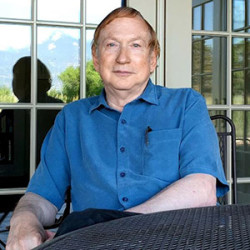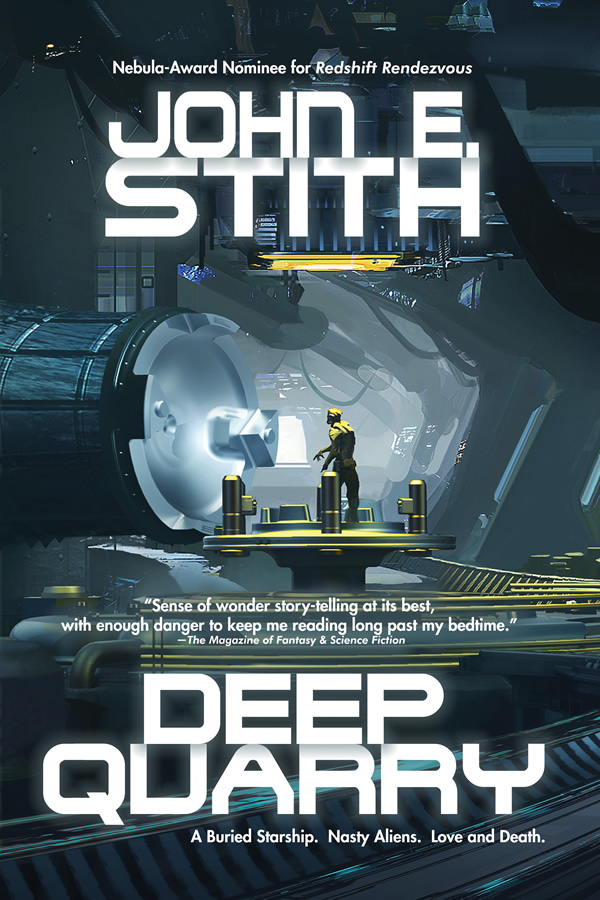One Way to Start a Novel by John E. Stith
Staring at a blank page can be terrifying or liberating. You’re facing an infinite sea of possibilities, sometimes too many possibilities.
One way I’ve approached novels is to start with three elements and see what coalesces around them. First is an emotional issue that’s currently on my mind. Second is science fictional idea. Third is a setting, a backdrop that fits with the first two.
Here are some tangible examples from my work.
Reunion on Neverend came to be written not long after I attended my high school reunion and was struck by the mix of people and places that seemed untouched by time, versus the aspects that had seen huge makeovers in a short time. I coupled with that the idea of an ancient interstellar transport system, lying dormant until discovered.
I still needed a setting compatible with the emotional core and the SF idea. My real reunion took place in the small town of Alamogordo, New Mexico. I found a science-fictional analog in the honeycombed planet called Neverend, an isolated community at the edge of known space.
While creating Death Tolls, I was partly responsible for raising a teenager, and prominent in my mind was the issue of taking personal responsibility for one’s actions. To that I added the SF idea of the Heisenberg Uncertainty Principle or the notion that the observer influences the action. In this case I wanted reporters fabricating news so they could get ratings and viewers. For a setting, I picked a newly terraformed Mars.
For Scapescope, I had a glimpse of an unavoidable, unwanted event in the future: a divorce. So I put my protagonist in a situation where a device that gives limited information about the future reveals to him that he will be on the government’s terror watch list. For a setting, I picked a future in which the US is massively overpopulated and used a particular former job location. I proposed that the underground complex that is currently the NORAD Cheyenne Mountain Complex will eventually be sold as surplus, and become occupied by a group of dissidents.
Amnesia has fascinated me for a long time. It formed the core for Memory Blank, and I gave the protagonist a lot of things to have missing from his memories–the devastation of life on Earth, and on a far more personal level, the loss of a daughter and a deteriorating marriage. The main science-fictional notion was that after the loss of more than ninety percent of humanity, a market for deliberate memory erasure could thrive. For the setting I picked a giant L-5 orbital colony popularized by Gerard O’Neil in The High Frontier.
A friend was a suicide-attempt survivor, and the young son of a friend did commit suicide, so that was on my mind during the genesis of Redshift Rendezvous. The SF idea was a slow light environment, a place where the speed of light was slowed down to ten meters a second. A place where if you flip a light switch, you can see the room slowly fill with light. To find a home for such a bizarre environment, I picked a spherical starship that cruises through hyperspace.
For years I’d been accumulating ideas for “the future doesn’t work.” These were examples of all the ways technology was failing us. But I don’t really believe the future won’t work, though I do think we too often prioritize cost over reliability. Finally, the story started to fall in line when I thought about the attempts to weaken our educational system by teaching religious thought rather than the three Rs. Fundamentalism vs the fundamentals. So I put a private eye into a dysfunctional near future filled with malfunctioning AIs, a future where designers are the products of a poor educational system, so they produce inferior devices. That work became the novella “Naught for Hire.”
This particular method might not work for you, but it could be one more tool in the toolbox.
 John E. Stith is a Nebula Award nominee for Redshift Rendezvous (Ace Books). His backlist is being reissued by ReAnimus Press during 2016 and 2017. Find him at http://www.neverend.com, on Facebook at https://www.facebook.com/john.e.stith, and on Twitter @JohnEStith.
John E. Stith is a Nebula Award nominee for Redshift Rendezvous (Ace Books). His backlist is being reissued by ReAnimus Press during 2016 and 2017. Find him at http://www.neverend.com, on Facebook at https://www.facebook.com/john.e.stith, and on Twitter @JohnEStith.

